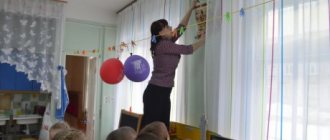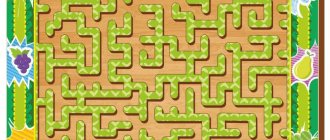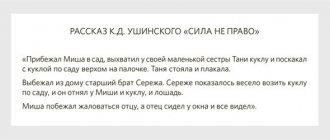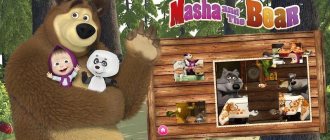Recently, discussions have often arisen about a tolerant world, the so-called world without violence and cruelty, in which the main value is the unique and inviolable human personality. But it is not enough to say beautiful words; tolerance must be cultivated through the development of good habits, manners, a culture of interpersonal communication, and the art of living in a world of unlike people.
In scientific publications, tolerance is interpreted primarily as respect and recognition of equality, rejection of domination and violence, and the diversity of human culture, norms, and beliefs. Tolerance is the willingness to accept others as they are and to interact with them on the basis of agreement. First of all, it assumes reciprocity and an active position of all interested parties. Tolerance is an important component of the life position of a mature person, who has her own values and interests and is ready, if necessary, to defend them, but at the same time respects the positions and values of other people. Preschool childhood is a time of achievements and problems not only for one little person, but for the whole society as a whole. At this age, children develop the skills of respectful and friendly behavior during relationships with representatives of different cultures, the ability to perceive the environment as the result of cooperation between people of different nationalities and different ethnic origins. They have a positive effect on a person, transform him, elevate him, and return him to a more harmonious state. It is advisable to begin the formation of tolerance from senior preschool age, since it is this age that is sensitive for the education of morality and tolerance; it is at this age that the foundation is laid for the further development of the child’s personality. In the formation of tolerance in preschool children, it is necessary to rely on playful methods of education, since play is the main activity of preschool children. In order for the work on developing tolerance in preschoolers to be fruitful, it is necessary to involve a wide range of events and different types of activities of preschoolers: 1) holding holidays and other mass forms in order to introduce children to the culture and traditions of their people and the peoples of the world; theatrical activities of preschoolers according to scenarios based on fairy tales of the peoples of the world; 2) role-playing games for preschoolers, the main goal of which is the development and practical application by children of methods of tolerant interaction; 3) Russian folk outdoor games, such as “Burn, Burn Clear”, “Boyars” and others; 4) holding Russian folk holidays, for example, “Maslenitsa”, “Christmas” in accordance with the folk calendar; 5) study of folk holidays of the closest neighboring countries, Scandinavian folk holidays; holidays of the peoples of the East and Muslim countries; 6) introducing children to the traditions of peoples of different countries; 7) with the traditions of celebrating the New Year, May 1, April 1 in different countries; games-activities created on materials from various fairy tales in order to solve problems of interpersonal interaction in fairy-tale situations; 9) writing fairy tales and stories by the children themselves; fairy tale dramatizations. Our group began working on developing tolerance by reading fairy tale books, since life is inextricably linked with books. Unfortunately, in our computer age there are fewer and fewer people who are interested in reading. But a fairy tale can teach you a lot. Why? What valuable things can you learn? Today we are talking about human values and our group will try to prove that fairy tales very well show the influence of human values on our lives. The goal of our group was, by analyzing some works, to show exactly what values are revealed in them and how they influence the lives of the heroes. — In “The Tale of the Fisherman and the Fish” by A.S. In Pushkin we see an example of a person’s desire for power. The old woman sent the old man to the fish five times. The requests were as follows: a new trough, a hut, a desire to become a pillar noblewoman, then a free queen and, finally, a mistress of the sea. The old woman, receiving more and more, strives to become the mistress of the sea, but greed and power do not bring her anything good. Having acquired a lot, she loses everything and is left with nothing. We have seen that the desire for power can destroy a person. - And in the fairy tale by G.Kh. Andersen's "The Snow Queen" we see another example. The fragile girl Gerda, for the sake of love for her neighbor, is ready to sacrifice herself. She overcomes all difficulties on her way to find her brother. The main values for her are love, friendship, a sense of camaraderie and mutual assistance. Perhaps we lack these values so much in life. — In the fairy tale “Dwarf Nose” by I. Gauf, the main character Jacob was turned into a dwarf for laughing at a strange old woman. He had to go through many trials and hardships. But he corrected himself and became handsome again. You shouldn’t laugh at those who have a strange appearance - they are people too and have the right to life. - Fairy tale “Turnip”. And this fairy tale is not about a turnip at all, but about friendly teamwork. — H.H. Andersen’s fairy tale “The Ugly Duckling” teaches you to be kind in any situation. The poor duckling had to go through so much: laughter, humiliation, exile, loneliness... But despite this, he remained kind. And he was rewarded - he grew into a beautiful swan. Why not a reward? A fairy tale is a great helper in developing tolerance. What a fairy tale doesn’t teach! — The fairy tale teaches: the world is divided into good and bad people, animals and other creatures. But there are always more good ones, and luck loves them. And the evil ones end their biography poorly. — The fairy tale creates the image of a Positive Hero: kind, smart, strong, true to his word. — The fairy tale teaches not to be afraid of difficulties. The Main Character always takes on any task, no matter how impossible it may seem. And in the fact that he wins, self-confidence, courage and the help of friends play a significant role. — The fairy tale teaches: don’t have a hundred rubles, but have a hundred friends. And the surest way to find a friend is not to turn away from him at the right moment. The fairy-tale Hero always has many friends: people, animals, birds, fish. Because he does not refuse to help those he meets on his way, and they, in turn, do not abandon our Hero in trouble. This is how the Hero gains invaluable Magical helpers. — The fairy tale teaches not to judge people by their appearance. When tested, Ivan the Fool always turns out to be Ivan the Tsarevich, and the Frog Princess always turns out to be the Beautiful Princess. And the terrible Baba Yaga is not a negative character in all fairy tales. — The fairy tale teaches: a good deed does not work out on the first try. The Fairytale Hero has to go against the Serpent Gorynych or another monster three times, but courage and perseverance are necessarily rewarded with victory. — The fairy tale teaches love for parents. A hero who carries out an order from his father or mother is always revered more than his careless brothers and sisters. And it is he who inherits “half a kingdom in addition.” — The fairy tale teaches patriotism. The Main Character always readily comes out to defend his native land from monster invaders. — The fairy tale contains a hidden, unobtrusive morality, moral teaching: you cannot deceive, you cannot be greedy, you cannot betray your friends. Every fairy tale has kindness and the habit of helping a friend out of trouble. — A fairy tale helps to defeat evil and cruelty. In fairy tales, the most incredible miracles happen: either the Serpent Gorynych carries away the beautiful princess to his domain, or the apple tree rewards the hardworking girl with golden apples, or the cunning fox deceives everyone. I see that you all love fairy tales and know them. But there are still many, many fairy tales that you have not read. And, most importantly, the fairy tale teaches that good is cyclical, it always returns to those who help others, and good always defeats evil. Isn't this a model of an ideal world? Having done this work, we came to the following conclusions. Fairy tales can teach us a lot. Many writers include the following as the highest values: love, friendship, kindness, mercy, fidelity. We realized that values can be overestimated and it depends on each of us which values to choose as the main ones in our lives. After all, not only our lives, but also the lives of those around us depend on our choice. Our library of good fairy tales G.H.Andersen “The Ugly Duckling” G.H.Andersen “Thumbelina” G.H.Andersen “The Snow Queen” V.Gauf “Dwarf Nose” R.N.S “Teremok” R.N.S . “Turnip” A.S. Pushkin “The Tale of the Fisherman and the Fish” V. Kataev “Flower - Seven Flowers” And that’s not all. The list of good fairy tales can be replenished endlessly!
Tolerance is the willingness to accept others as they are and to interact with them on the basis of agreement. First of all, it assumes reciprocity and an active position of all interested parties. Tolerance is an important component of the life position of a mature person, who has her own values and interests and is ready, if necessary, to defend them, but at the same time respects the positions and values of other people. Preschool childhood is a time of achievements and problems not only for one little person, but for the whole society as a whole. At this age, children develop the skills of respectful and friendly behavior during relationships with representatives of different cultures, the ability to perceive the environment as the result of cooperation between people of different nationalities and different ethnic origins. They have a positive effect on a person, transform him, elevate him, and return him to a more harmonious state. It is advisable to begin the formation of tolerance from senior preschool age, since it is this age that is sensitive for the education of morality and tolerance; it is at this age that the foundation is laid for the further development of the child’s personality. In the formation of tolerance in preschool children, it is necessary to rely on playful methods of education, since play is the main activity of preschool children. In order for the work on developing tolerance in preschoolers to be fruitful, it is necessary to involve a wide range of events and different types of activities of preschoolers: 1) holding holidays and other mass forms in order to introduce children to the culture and traditions of their people and the peoples of the world; theatrical activities of preschoolers according to scenarios based on fairy tales of the peoples of the world; 2) role-playing games for preschoolers, the main goal of which is the development and practical application by children of methods of tolerant interaction; 3) Russian folk outdoor games, such as “Burn, Burn Clear”, “Boyars” and others; 4) holding Russian folk holidays, for example, “Maslenitsa”, “Christmas” in accordance with the folk calendar; 5) study of folk holidays of the closest neighboring countries, Scandinavian folk holidays; holidays of the peoples of the East and Muslim countries; 6) introducing children to the traditions of peoples of different countries; 7) with the traditions of celebrating the New Year, May 1, April 1 in different countries; games-activities created on materials from various fairy tales in order to solve problems of interpersonal interaction in fairy-tale situations; 9) writing fairy tales and stories by the children themselves; fairy tale dramatizations. Our group began working on developing tolerance by reading fairy tale books, since life is inextricably linked with books. Unfortunately, in our computer age there are fewer and fewer people who are interested in reading. But a fairy tale can teach you a lot. Why? What valuable things can you learn? Today we are talking about human values and our group will try to prove that fairy tales very well show the influence of human values on our lives. The goal of our group was, by analyzing some works, to show exactly what values are revealed in them and how they influence the lives of the heroes. — In “The Tale of the Fisherman and the Fish” by A.S. In Pushkin we see an example of a person’s desire for power. The old woman sent the old man to the fish five times. The requests were as follows: a new trough, a hut, a desire to become a pillar noblewoman, then a free queen and, finally, a mistress of the sea. The old woman, receiving more and more, strives to become the mistress of the sea, but greed and power do not bring her anything good. Having acquired a lot, she loses everything and is left with nothing. We have seen that the desire for power can destroy a person. - And in the fairy tale by G.Kh. Andersen's "The Snow Queen" we see another example. The fragile girl Gerda, for the sake of love for her neighbor, is ready to sacrifice herself. She overcomes all difficulties on her way to find her brother. The main values for her are love, friendship, a sense of camaraderie and mutual assistance. Perhaps we lack these values so much in life. — In the fairy tale “Dwarf Nose” by I. Gauf, the main character Jacob was turned into a dwarf for laughing at a strange old woman. He had to go through many trials and hardships. But he corrected himself and became handsome again. You shouldn’t laugh at those who have a strange appearance - they are people too and have the right to life. - Fairy tale “Turnip”. And this fairy tale is not about a turnip at all, but about friendly teamwork. — H.H. Andersen’s fairy tale “The Ugly Duckling” teaches you to be kind in any situation. The poor duckling had to go through so much: laughter, humiliation, exile, loneliness... But despite this, he remained kind. And he was rewarded - he grew into a beautiful swan. Why not a reward? A fairy tale is a great helper in developing tolerance. What a fairy tale doesn’t teach! — The fairy tale teaches: the world is divided into good and bad people, animals and other creatures. But there are always more good ones, and luck loves them. And the evil ones end their biography poorly. — The fairy tale creates the image of a Positive Hero: kind, smart, strong, true to his word. — The fairy tale teaches not to be afraid of difficulties. The Main Character always takes on any task, no matter how impossible it may seem. And in the fact that he wins, self-confidence, courage and the help of friends play a significant role. — The fairy tale teaches: don’t have a hundred rubles, but have a hundred friends. And the surest way to find a friend is not to turn away from him at the right moment. The fairy-tale Hero always has many friends: people, animals, birds, fish. Because he does not refuse to help those he meets on his way, and they, in turn, do not abandon our Hero in trouble. This is how the Hero gains invaluable Magical helpers. — The fairy tale teaches not to judge people by their appearance. When tested, Ivan the Fool always turns out to be Ivan the Tsarevich, and the Frog Princess always turns out to be the Beautiful Princess. And the terrible Baba Yaga is not a negative character in all fairy tales. — The fairy tale teaches: a good deed does not work out on the first try. The Fairytale Hero has to go against the Serpent Gorynych or another monster three times, but courage and perseverance are necessarily rewarded with victory. — The fairy tale teaches love for parents. A hero who carries out an order from his father or mother is always revered more than his careless brothers and sisters. And it is he who inherits “half a kingdom in addition.” — The fairy tale teaches patriotism. The Main Character always readily comes out to defend his native land from monster invaders. — The fairy tale contains a hidden, unobtrusive morality, moral teaching: you cannot deceive, you cannot be greedy, you cannot betray your friends. Every fairy tale has kindness and the habit of helping a friend out of trouble. — A fairy tale helps to defeat evil and cruelty. In fairy tales, the most incredible miracles happen: either the Serpent Gorynych carries away the beautiful princess to his domain, or the apple tree rewards the hardworking girl with golden apples, or the cunning fox deceives everyone. I see that you all love fairy tales and know them. But there are still many, many fairy tales that you have not read. And, most importantly, the fairy tale teaches that good is cyclical, it always returns to those who help others, and good always defeats evil. Isn't this a model of an ideal world? Having done this work, we came to the following conclusions. Fairy tales can teach us a lot. Many writers include the following as the highest values: love, friendship, kindness, mercy, fidelity. We realized that values can be overestimated and it depends on each of us which values to choose as the main ones in our lives. After all, not only our lives, but also the lives of those around us depend on our choice. Our library of good fairy tales G.H.Andersen “The Ugly Duckling” G.H.Andersen “Thumbelina” G.H.Andersen “The Snow Queen” V.Gauf “Dwarf Nose” R.N.S “Teremok” R.N.S . “Turnip” A.S. Pushkin “The Tale of the Fisherman and the Fish” V. Kataev “Flower - Seven Flowers” And that’s not all. The list of good fairy tales can be replenished endlessly!
Tolerance Day in kindergarten.
Tolerance Day in kindergarten.
I do not agree with what you say, but I will sacrifice my life to defend your right to express your own opinion. Voltaire
Tolerance means tolerating other lifestyles, behavior, customs, feelings, opinions, ideas, beliefs. The foundations of tolerance are laid in preschoolers during work in the classroom, during leisure time, in independent play activities, excursions; this is a huge daily work of teachers. Our kindergarten brings up children of different nationalities, and we try to make our home truly kind, warm, and bright for everyone who lives in it. In November, a day of tolerance was held at the Semitsvetik kindergarten. To be tolerant means to “allow” to allow, to show generosity towards others. We are different, completely different from each other, we have different skin colors, we speak different languages, we have different customs and traditions. But we are all united in one thing - we are people, we must treat each other with tolerance, respect, calmness, without hostility, value and value friendship. Man is born and lives on Earth to do good. We must stick together, take care of each other, give smiles, say kind words. As part of the day of tolerance, various events were held in the kindergarten under the motto: “If everyone is tolerant of each other, we will make our world tolerant together!” Teachers of younger groups told children about friendship, using gaming technologies, theatrical performances, and artistic expression. Pupils of senior preschool age during the conversations: “We are different, but we are friends”, “How can we say hello”, became acquainted with the concept of tolerance. Children got an idea about people of different nationalities, got acquainted with the culture and national costumes of different nations, and organized an exhibition “Dolls of different nations.” Analysis of problem situations helped preschoolers consolidate their knowledge about friendship, good and bad deeds. They didn’t forget to help their feathered friends; they poured food into the feeders during the walk. Children enjoyed playing communicative and round dance games: “Call your neighbor affectionately,” “Round dance of friendship,” “Matryoshka dolls,” “Bubble,” “In an even circle,” “Vanya walks,” “Loaf.” We listened to works from the series “Tales of the Peoples of the World”. You created creative works, and in the evening, together with hearts made using the origami technique, you gave your parents the warmth of their hearts. Man is born and lives on Earth to do good. We must stick together, take care of each other, give smiles, say kind words.
Teacher Irina Malacheva




